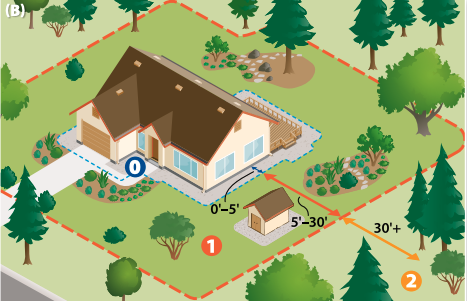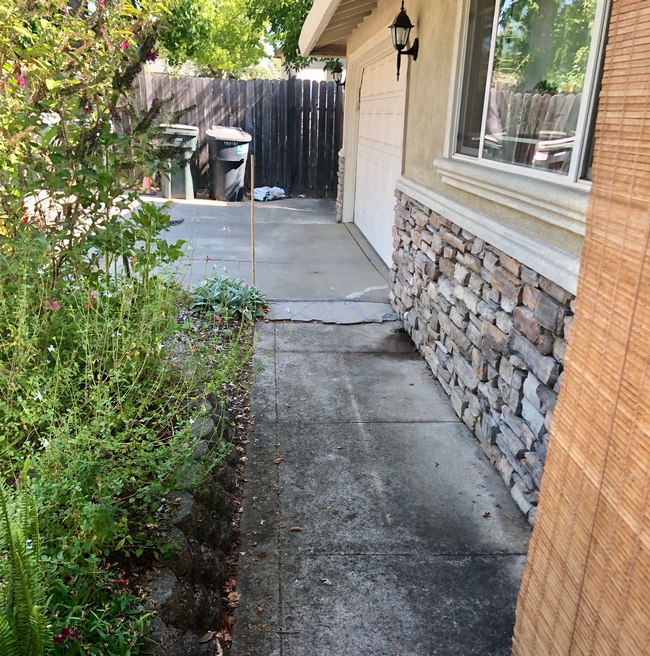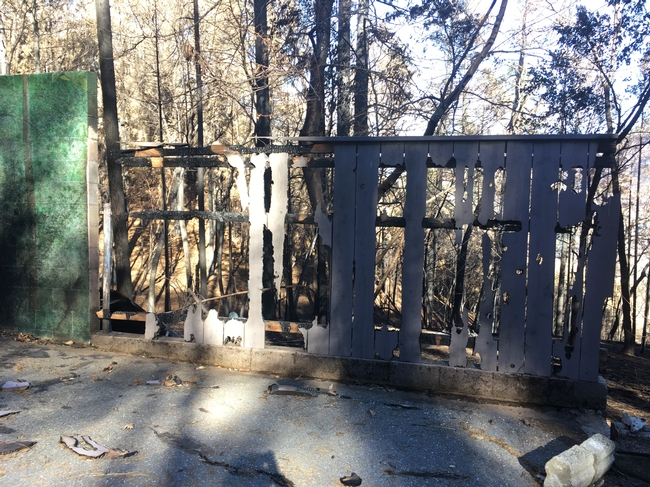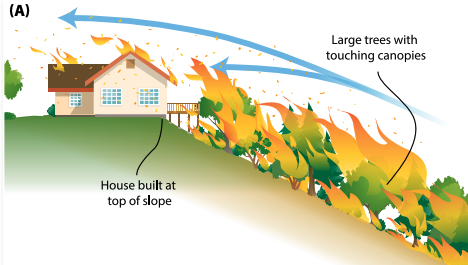What can Californians do to improve the chances that their homes will survive a wildfire? Simple actions taken around the home can substantially improve the odds that a home will survive wildfire, according to UC Cooperative Extension advisors.
During wildfire, structures are threatened not only by the flaming front of the fire, but also by flaming embers that are lofted ahead of the fire front and land on fuels such as vegetation or mulch next to the house, igniting new fires. Traditional defensible space tactics are designed to mitigate threats from the flaming front of the fire but do little to address vulnerabilities to embers on or beside a structure.
“Without attention to ember-related risks, defensible space efforts only address a portion of the wildfire threat—especially during wind-driven fires in which embers are the primary source of fire spread,” said co-author Yana Valachovic, UC Cooperative Extension forest advisor in Humboldt and Del Norte counties.
An updated University of California Agriculture and Natural Resources publication describes how embers, radiant heat, and direct flame contact ignite buildings and shares low-cost actions residents can take to create effective defensible space.
“The new publication is up-to-date with the changes in California's defensible space guidance, and it addresses Zone Zero, or the missing ingredient, in defense space,” Valachovic said. “The publication also provides a thoughtful discussion of plant lists and their limitations.”
The odds of a home surviving a wildfire can be substantially improved through careful attention to three things: careful design and maintenance of landscaping; awareness and management of combustible materials on the property such as leaf litter, wood piles and lawn furniture; and incorporation of fire- and ember-resistant construction materials with appropriate installation and maintenance.
“You don't have to spend a lot to protect your home from these wildfire threats,” said Valachovic.
Zone Zero, the area within five feet of the house, is the most vulnerable area around the home, according to the UC Cooperative Extension researchers. “During wind-driven fires, embers are the primary source of fire spread,” Valachovic said.
They recommend removing combustible plants, planter boxes, mulches and wood piles within the five-foot perimeter of the house and beneath attached decks.
“While it may be a radical change, clearing the area next to the house will reduce the risk of ember-caused direct flame contact and radiant heat exposure, which are responsible for many home losses,” she said. “Because embers can accumulate at the base of an exterior wall, it is also important to create a six-inch noncombustible zone between the ground and the start of the building's siding.”
Colorful illustrations in the publication depict the three-zone defensible space strategy and show how spacing out trees on a sloped landscape can prevent fire from climbing from tree to tree to reach a house at the top of the slope.
The 12-page “Reducing the Vulnerability of Building to Wildfire: Vegetation and Landscaping Guidance” is available free for download at https://anrcatalog.ucanr.edu/pdf/8695.pdf.
“Landscaping for fire is part of an overall strategy aimed at reducing risk to the home,” said co-author Steven Swain, UC Cooperative Extension environmental horticulture advisor for Marin and Sonoma counties. “To reduce the risk of home loss, start at the house and work out from there,” he recommended.
Swain, Valachovic and Stephen Quarles, UC Cooperative Extension advisor emeritus, are currently updating a publication on retrofitting houses for wildfire resiliency.
Steps for hardening houses against wildfire can also be found at the Fire in California website: https://ucanr.edu/sites/fire/Prepare/Building.



